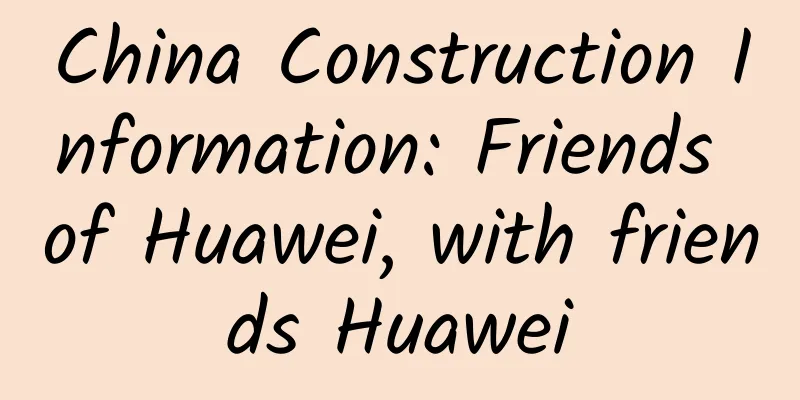Five major trends in the new stage of 5G development

|
It has been three years since my country started commercializing 5G, and it has made remarkable achievements in network construction, user scale, application innovation, and other aspects, and is in a leading position globally. According to the development law of domestic mobile communications, the development of the new generation of mobile communication technology can be divided into four periods according to the user utilization rate: market cultivation period (below 30%), rapid development period (30%-70%), mature and stable period (70%-85%) and new and old alternation period (above 85%). At present, there are 575 million 5G mobile phone users, more than 30%, and the market cultivation stage has been completed. With the global economic recovery, it is entering a rapid development period. In order to promote the smooth development of 5G business into a new stage, it is necessary to pay attention to the five major development trends in the new stage, seize the window period, and achieve scale breakthroughs and high-quality development. 1. 5G networks lead in scale, deepen co-construction and sharing, accelerate spectrum re-cultivation, and further enhance coverage breadth and depth The past two years have been the peak period for 5G investment and construction. By the end of 2022, my country's 5G base stations will reach 2.312 million, accounting for more than 60% of the total number of 5G base stations in the world. In 2023, my country's 5G infrastructure investment and construction will enter the middle and late stages. Although the world's largest 5G network has been built, the breadth and depth of coverage need to be further improved. In the future, we will continue to adhere to the principle of moderately advanced construction, build on demand, and invest accurately to promote the continuous coverage of 5G networks in towns and villages and the deep coverage of application scenarios such as important parks and hot spots. 5G co-construction and sharing has become an industry consensus. China Telecom and China Unicom, China Mobile and China Broadcasting Corporation have signed 5G co-construction and sharing agreements respectively. According to the "Information and Communication Industry Green and Low-carbon Development Action Plan (2022-2025)" issued by the Ministry of Industry and Information Technology and other seven departments, it is estimated that the sharing rate of newly built 5G base stations in 2025 will be no less than 80%. Operators will jointly accelerate the development of my country's new infrastructure by comprehensively deepening co-construction and sharing. Spectrum resources are the key to 5G network deployment. 5G spectrum planning needs to consider the coverage capabilities of different frequency bands. Previously, except for China Broadcasting Corporation, which owns the 700MHz frequency band, the 5G spectrum of the three major operators was mainly distributed in the mid-frequency band and mid-high frequency band. In 2022, China Unicom's 900MHz spectrum re-cultivation was authorized by the Ministry of Industry and Information Technology. China Mobile and China Broadcasting Corporation started the large-scale construction of 700M 5G networks. 5G is accelerating towards low-frequency bands. Operators will strengthen the efficient coordination of various frequency bands and improve 5G network coverage. 2. 5G network experience continues to be optimized, and user experience and perception monitoring promote accurate network construction and optimization The "5G User Network Perception Quality Experience Evaluation Report (2022)" released by China Telecom Research Institute shows that the overall perceived quality of 5G users across the industry is excellent, and the 5G network coverage and network experience in some key scenarios such as indoor areas of high-frequency usage scenarios and closed areas such as underground parking lots and elevators, as well as mobile travel scenarios such as high-speed rail, have improved compared to 2021. However, there are still differences in 5G network perception between scenarios, between indoors and outdoors, and between different locations. Operators have focused on the above issues and developed targeted optimization plans, and the user network experience will be further improved in the future. Since the construction period of 5G network coverage is longer than that of 4G, in the stage where 5G network coverage is still imperfect, in order to improve users' network experience, operators will continue to optimize 5G network coverage while enhancing the synergy with 4G networks. Based on key complaints about 5G networks, they will carry out targeted network optimization and precise site expansion. 3. Improved 5G service quality drives steady growth in industry revenue, and industry collaboration and cooperation strengthen, promoting growth in both scale and value The communications industry maintained steady development in 2022. Although the revenue growth rate slowed down in the third quarter due to the macro environment and high base, the overall revenue for the whole year still increased by 8% year-on-year (see Figure 1). Figure 1 Telecommunications business revenue growth rate from 2018 to 2022 (Data source: Ministry of Industry and Information Technology) Entering 2023, my country's 5G investment has gradually passed its peak, and the growth rate of 5G package participation rate has stabilized. At the same time, there are still problems such as slow 5G terminal access and low 5G diversion ratio, which may have an impact on the later market growth. But overall, the industry's development path is relatively clear. With economic recovery, policy implementation and technological innovation, it will promote the continuous improvement of business quality and is expected to bring a new round of higher growth to the industry. In the new stage, in order to promote new growth in the industry, cooperation among all parties in the industry is showing a trend of continuous strengthening. Provinces, cities and operators have established various 5G industry alliances to absorb upstream and downstream partners in the industrial chain, and accelerate the formation of a 5G ecosystem with information sharing, complementary advantages, and win-win cooperation. It focuses on technology development, terminal innovation, and application implementation, and cultivates new models and new business forms for industry development. 4. The 5G mobile phone market is unlikely to recover in the short term, and both supply and demand sides are exploring new momentum breakthroughs The overall performance of the domestic mobile phone market was sluggish in 2022. The cumulative domestic mobile phone shipments in 2022 were only 272 million units, of which 5G mobile phone shipments were 214 million units, a year-on-year decrease of 19.6%. The shipment ratio of 4G and 5G mobile phones has been at 2:8 for a long time, and it will take some time to fully upgrade to 5G (see Figure 2). Figure 2 Domestic 5G mobile phone shipments from 2021 to 2022 (Data source: China Academy of Information and Communications Technology) Affected by factors such as the economic environment, market saturation, and insufficient terminal innovation, users' phone replacement cycle has lengthened and the motivation to replace phones is insufficient. In the short term, the 5G terminal market will still face great pressure and need to explore new momentum for upward breakthroughs. It is expected that the industry will exert efforts from both the supply side and the demand side. (1) Supply side: software and hardware are working together, and the industry has strong innovation momentum Terminal innovation may become the main breakthrough point to stimulate users' enthusiasm for changing phones. The driving force of innovation mainly comes from user demand, technological development and industry competition. Among them, foldable screen mobile phones have shown a trend of reverse growth in the overall downturn of the smartphone market. In 2022, the domestic annual shipment volume was nearly 3.3 million units, a year-on-year increase of 118%. As major terminal manufacturers have successively made efforts, the price of foldable screen mobile phones has gradually dropped and the performance has been continuously optimized. The shipment volume is expected to continue to rise, becoming a powerful growth point in the high-end market. Operators are focusing on 5G cloud phones, such as China Telecom Tianyi No. 1 and China Mobile NZONE 50 pro. Although their marketization, scale and maturity need to be improved, they have powerful storage and computing functions and are priced at only a few thousand yuan, which makes them attractive to the mid- and low-end markets. According to a survey conducted by China Telecom Research Institute in October 2022, consumers have a high awareness of foldable screen phones, but are less willing to buy high-configuration 5G foldable screen phones priced at RMB 10,000 launched by Huawei, Samsung and other manufacturers. The high price is the main factor restricting users from purchasing. Users have a low awareness of cloud phones, but most users say that the thousand-yuan 5G cloud phones launched by operators are cost-effective and are interested in trying them (see Figure 3). Currently, major manufacturers mainly launch high-configuration foldable screen flagship phones for the high-end market. In the future, as the technology matures, foldable screens are expected to be applied to more models, which may effectively inspire users to change their phones. Figure 3 User awareness of foldable screen phones and cloud phones (Data source: China Telecom Research Institute user survey) (2) Demand side: Segmented demands are gaining more and more attention, and the IoT ecosystem stimulates demand potential In order to cultivate users' demand for 5G mobile phones, terminal manufacturers have continuously adjusted their product systems in recent years, paying attention to the differentiated needs of segmented groups in business, entertainment, photography, etc., promoting the functional differentiation of different series of products and the enhancement of functions in key scenarios, and focusing product design and marketing promotion on specific scenarios. The shift from the strategy of flooding the market with products to refined operations for segmented needs has become an industry development trend. Facing the multi-terminal era of "Internet of Things", terminal manufacturers are also strengthening ecological integration and expanding 5G large-connection Internet of Things scenarios. 5G mobile phones will become the key entrance to users' smart life, stimulating and creating new user demands. 5. 5G applications focus on key scenarios and accelerate advancement (1) Innovations in 5G personal applications are emerging, giving rise to new business models and new experiences 5G personal applications have made positive progress in many fields, but they still face problems such as insufficient terminal support, insufficient high-quality content resources, insufficient integration of key technologies and applications, and low user awareness and acceptance. They are still in the stage of improving the experience of existing applications such as ultra-high-definition video and developing natural interactive 5G applications (such as the recent popular ChatGPT, which may bring a leap in 5G mobile phone experience). With the development of new terminals such as XR and the continuous enrichment of innovative digital content, immersive new 5G applications will bring more new experiences to consumers, promoting 5G personal applications to usher in a breakthrough from quantitative change to qualitative change. (2) 5G industry applications are being promoted in stages, with industry terminals becoming more diversified, customized, and large-scale. 5G industry applications have expanded from a few spots to full access in multiple industries and fields. Currently, it covers 40 major categories of the national economy, and operators have deployed more than 10,000 virtual private networks. However, the breadth and depth are still insufficient, and the empowerment of the industry is still in the stage of supplementation and superposition. In the future, we will focus on scale expansion and value implementation, starting with the leading industries and rigid demand scenarios with high and clear digital needs, and implementing key industries in a classified manner and introducing key applications in stages. It is expected to cover more than 90% of the major categories of the national economy in 2025. Promote the development of 5G industry customized terminals in the direction of diversification, customization, and scale. In 2025, the total number of 5G terminals will exceed 3,200, of which 2,000 will be industry terminals. In the future, as key technologies mature and industrial innovation and integration are strengthened, 5G's empowerment of the industry will gradually move towards the stage of substitution optimization and native transformation, driving the digital economy to create a new growth curve. (3) Industry technology evolution promotes innovative breakthroughs in application scenarios The evolution of 5G technology to 5.5G (5G Advanced) can meet more complex and diverse full-scenario needs that 5G cannot achieve, promote the scale of innovative applications such as the metaverse and autonomous driving, and is expected to achieve breakthrough development of 5G-specific applications and bring killer applications to the industry. In the future, with the full advancement of 6G technology research and development, it will promote the continuous deepening of application scenarios, expand the integration of communication perception and inclusive intelligence, and expand the service scope to the air, space, and land, achieving global three-dimensional coverage, bringing innovative scenario applications such as holographic communication, digital twins, brain-computer interaction, and the Internet. |
<<: New wireless technology extends 5G value proposition indoors
>>: Ten advantages of structured cabling system
Recommend
Tudcloud: Hong Kong VPS with 20% off monthly payment and 30% off annual payment starting from $7.2/month, with options of large bandwidth or unlimited traffic
Tudcloud has launched this month's regular pr...
A 10,000-word article interprets the operators' fight for 5G: a battle of three kingdoms in financial strength
For a long time, the development of high-tech com...
SpeedyPage 10% off, starting from $4.83/month-AMD Ryzen, DDR5 memory, Gen4 NVMe, Ashburn computer room
SpeedyPage recently launched a high-performance V...
Do you really understand API Gateway? This article explains the differences and integration between microservice gateway and enterprise application gateway
Software architecture is always evolving and iter...
How to use big data well? Liu Jianhui of 51 Credit Card reveals the way to advance big data application products
[51CTO.com original article] The Global Software ...
Smart city becomes the new name card of Lanzhou New District: new momentum for the new district breeds new development
[51CTO.com original article] Not long ago, the 20...
Let’s not talk about technology, but business scenarios: Huawei’s fully cloud-based network enables digital transformation
[Original article from 51CTO.com] At the recently...
What is the difference between a wireless access point and a wireless router?
[[183847]] There is a distinct difference between...
Wang Chunhui: 5G releases three major functions to drive China on the path of high-quality development
On June 6, 2019, the Ministry of Industry and Inf...
Li-Fi is 100 times faster than Wi-Fi. Is it reliable?
Wi-Fi has had a huge impact on mobile computing, ...
Diagram | In-depth understanding of the stumbling blocks on the road to high-performance network development - synchronous blocking network IO
[[386495]] This article is reprinted from the WeC...
Three steps to converge cloud and edge computing for IoT
The Internet of Things has grown rapidly over the...
"Building Intelligent Computing Power to Empower the Digital Economy"——2021 Ascend AI Server Product Launch Conference Successfully Held in Beijing
Spring brings blessings, and everything is glorio...
Is 5G really going to kill WiFi?
If we were to say what surrounds our lives nowada...
Justhost Hong Kong VPS upgraded to up to 10Gbps bandwidth, 20% off unlimited traffic, starting at $3.46 per month
I received a message from Justhost.ru, hoping to ...









